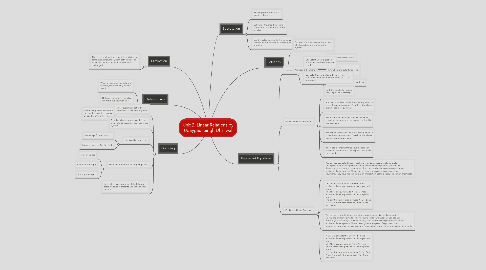
1. Ordered Pairs
1.1. When an equation has only one variable, there can only be one solution
1.2. Only one value of the variable will make the equation true
1.3. When an equation has more than one variable, it has multiple solution because each variable depends on the other for its value
2. Graphing
2.1. Linear system is a set of two or more lines, considered together
2.2. To solve a linear system, we find the point of intersection of the lines in the system
2.3. Lines can be written in:
2.3.1. y-intercept form -> y=mx+b
2.3.2. Standard form -> Ax+By+C=0
2.4. There are 3 methods for graphing lines:
2.4.1. Table of Values
2.4.2. y-intercept + slope
2.4.3. x and y intercepts
2.5. First differences determine if the following table of values represents a linear/non-linear relation
3. Elimination
3.1. That if you add, subtract, multiply, or divide the same quantity (number) from both sides of an equation, the equation/solution remains unchanged
4. Substitution
4.1. Rearrange one equation to isolate either x or y
4.2. Substitute this into the second equation to solve for one of the variables
4.3. Use this value to solve for the remaining variable by substituting back into the first equation
5. Solutions
5.1. Solution of a linear system is the point of intersection of the lines in the system
5.2. Number of Solutions
5.2.1. Parallel Lines (no solutions)
5.2.2. Non Parallel Lines/Perpendicular Lines (one solution)
5.2.3. Overlapping Lines (infinite solutions)
6. Equivalent Equations
6.1. Terms:
6.1.1. Equivalent Linear Equation: Equations that have the same graph
6.1.2. Equivalent Linear Systems: Pairs of linear equations that have the same point of intersection
6.2. Equivalent Linear Equation:
6.2.1. Both the graphs have same line, slope and y-intercept.
6.2.2. You can multiply or divide the linear equation so it has the same constants. Therefore, both linear systems can be equivalent.
6.2.3. There can be many/infinite equivalent linear equations because you can expand or simplify the equation.
6.2.4. You can multiply or divide the linear equation so it has the same constants. Therefore, both linear systems can be equivalent.
6.2.5. There can be many/infinite equivalent linear equations because you can expand or simplify the equation.
6.3. Equivalent Linear Systems:
6.3.1. You can use equivalent linear equations to write an equivalent linear system. Since pairs of intersecting lines have equivalent linear equations, you can use these to your advantage to either simplify or expand these equations and create equivalent linear systems. These linear systems are pairs of equivalent linear equations. They have the same point of intersection, same slopes, and same y-intercepts.
6.3.2. Y=2x+2 is equivalent to 2y=4x+4. These equivalent linear equations are just expanded forms. 6Y=24x+6 is equivalent to Y=3x+1. These equivalent linear equations are just simplified forms. The point of intersection between Y=2x+2 and Y=3x+1 is exactly the same as 2y=4x+4 and 6Y=24x+6.
6.3.3. You can use equivalent linear equations to write an equivalent linear system. Since pairs of intersecting lines have equivalent linear equations, you can use these to your advantage to either simplify or expand these equations and create equivalent linear systems. These linear systems are pairs of equivalent linear equations. They have the same point of intersection, same slopes, and same y-intercepts.
6.3.4. Y=2x+2 is equivalent to 2y=4x+4. These equivalent linear equations are just expanded forms. 6Y=24x+6 is equivalent to Y=3x+1. These equivalent linear equations are just simplified forms. The point of intersection between Y=2x+2 and Y=3x+1 is exactly the same as 2y=4x+4 and 6Y=24x+6.
